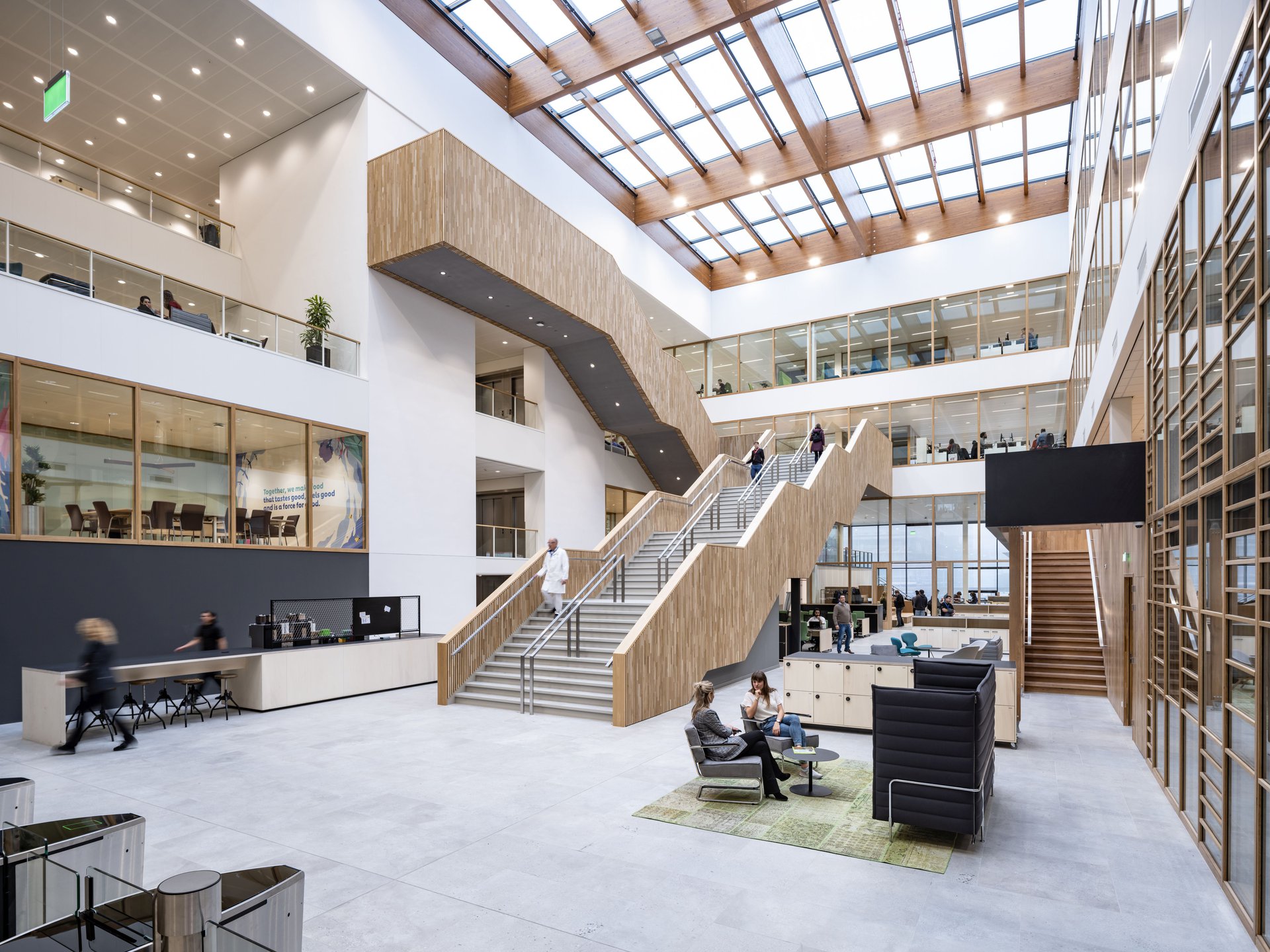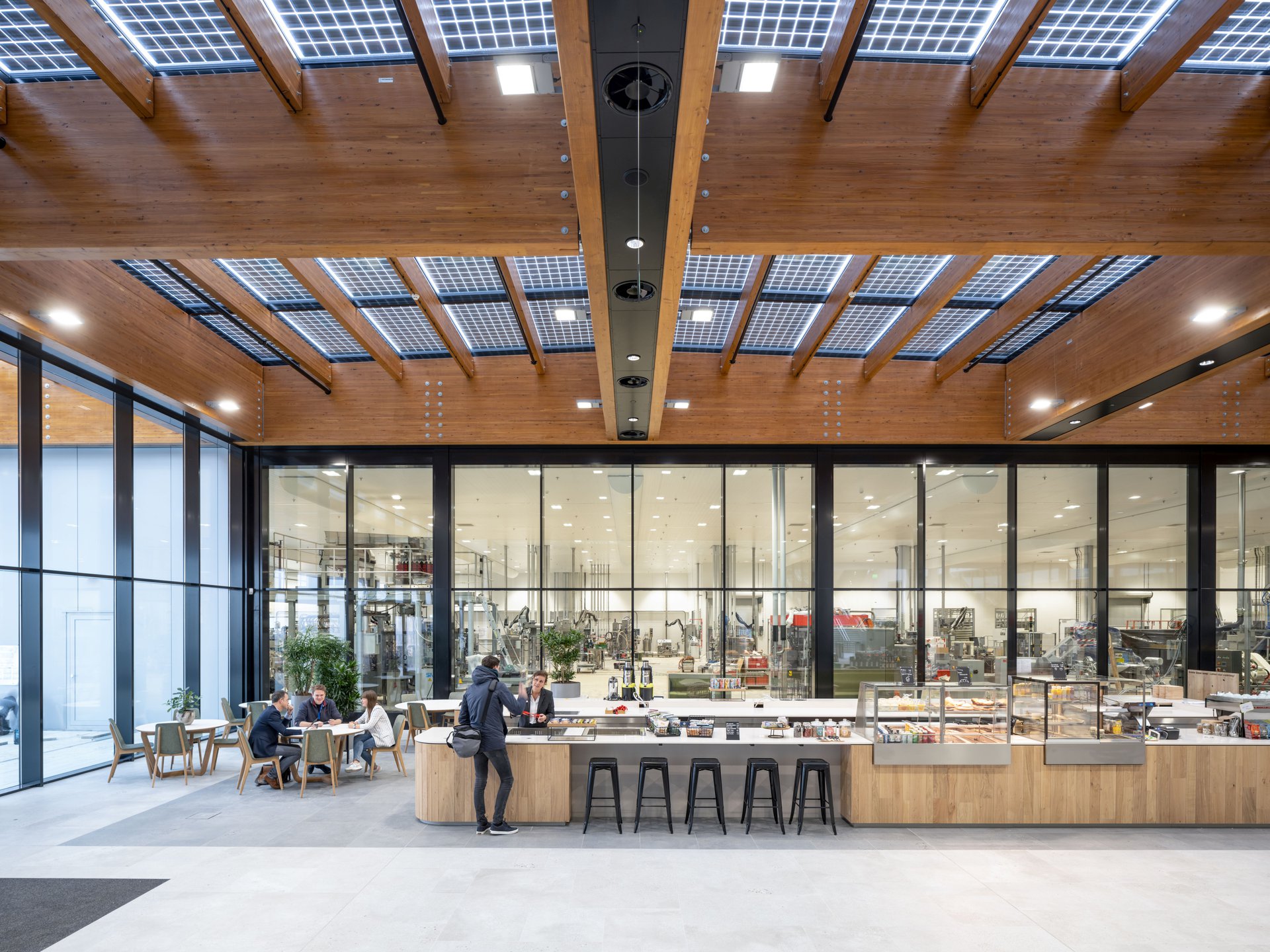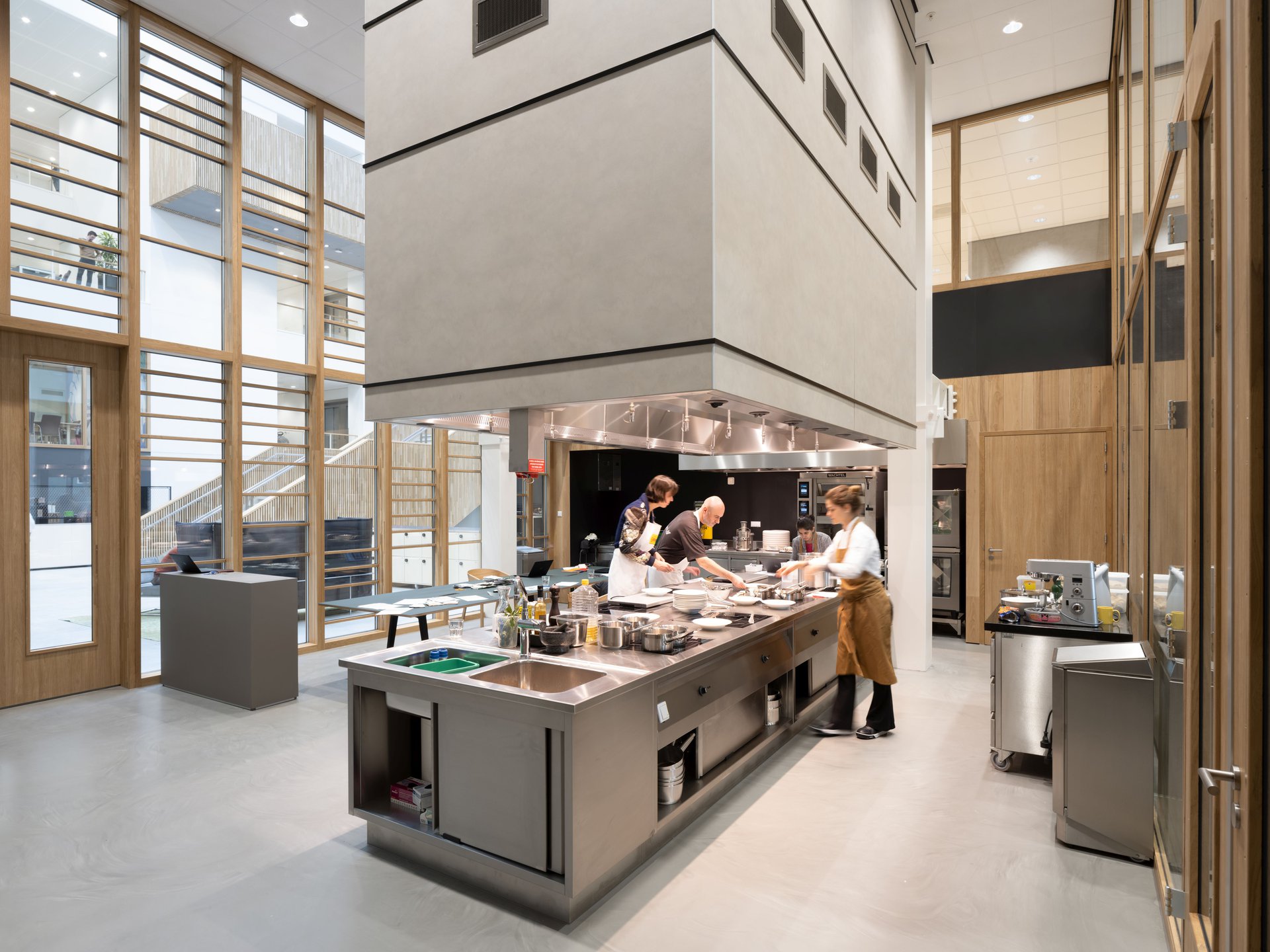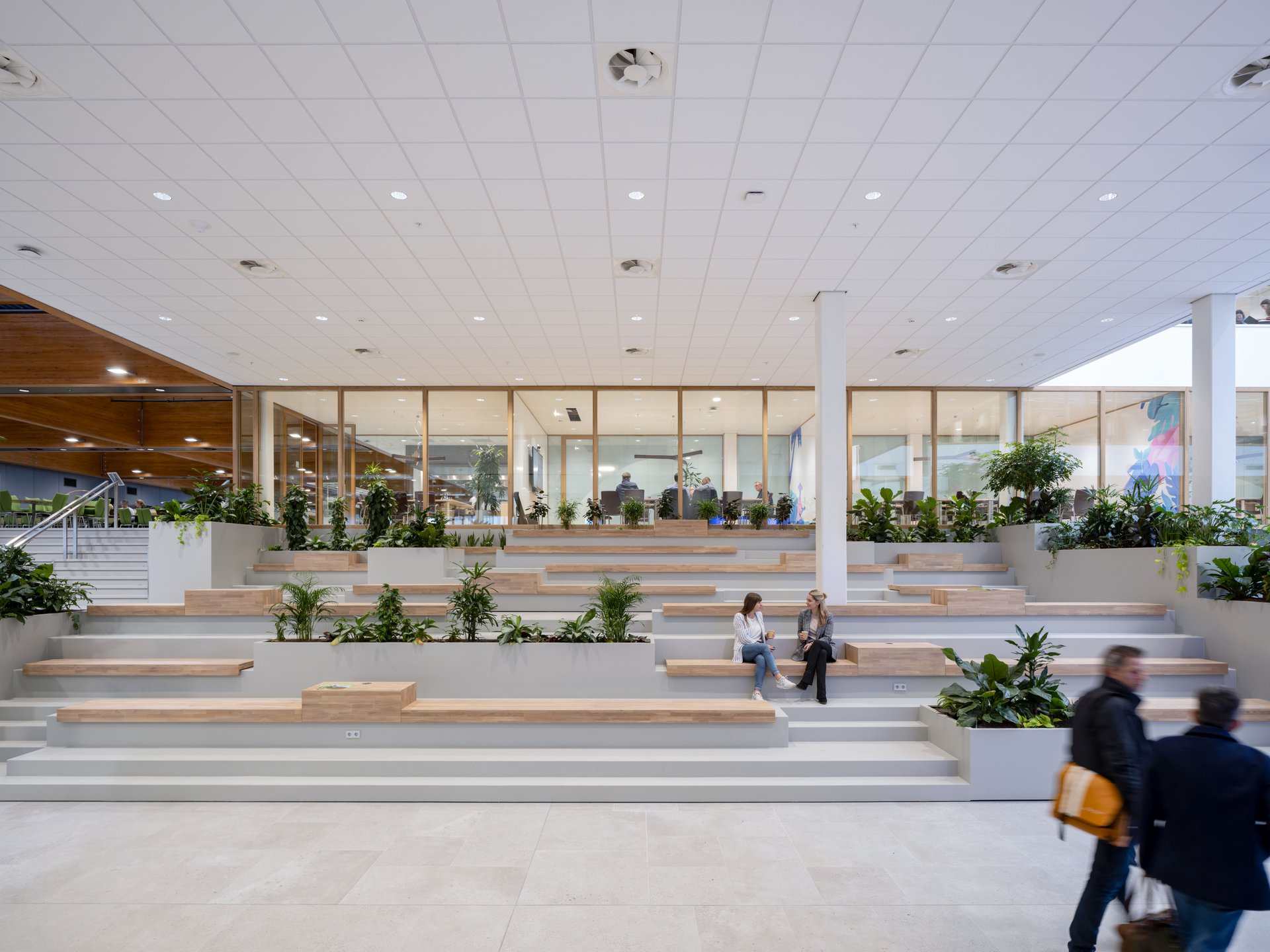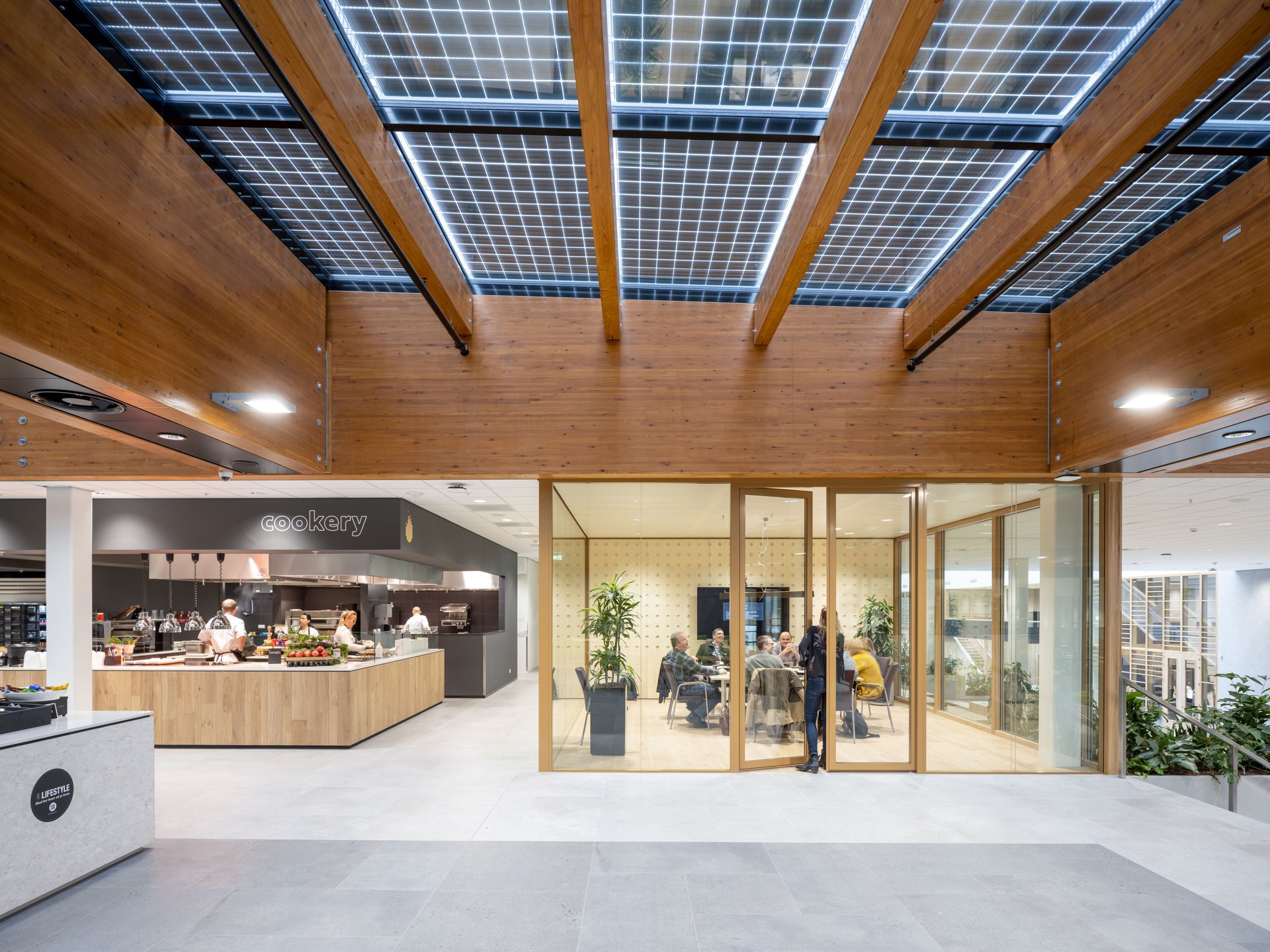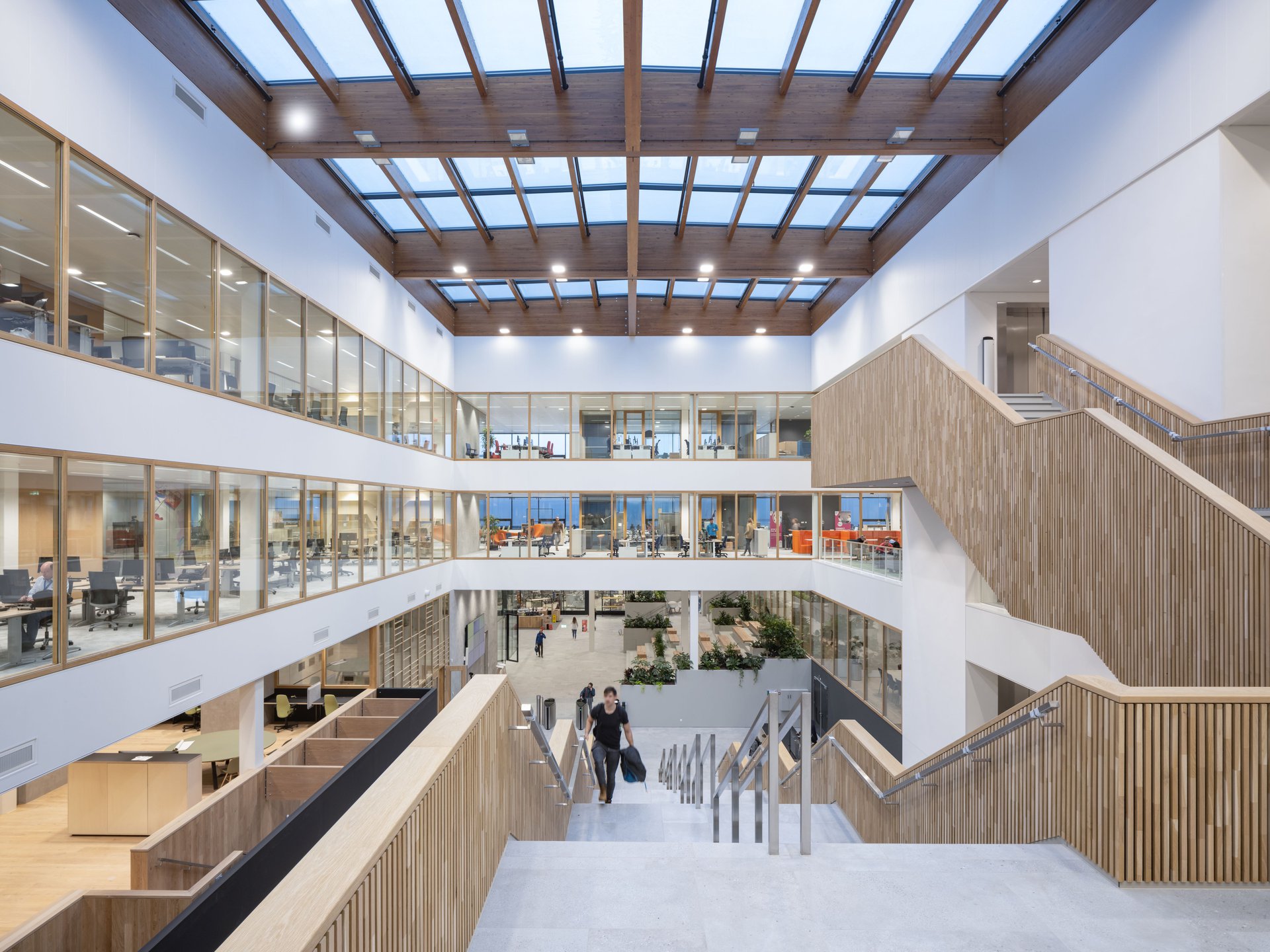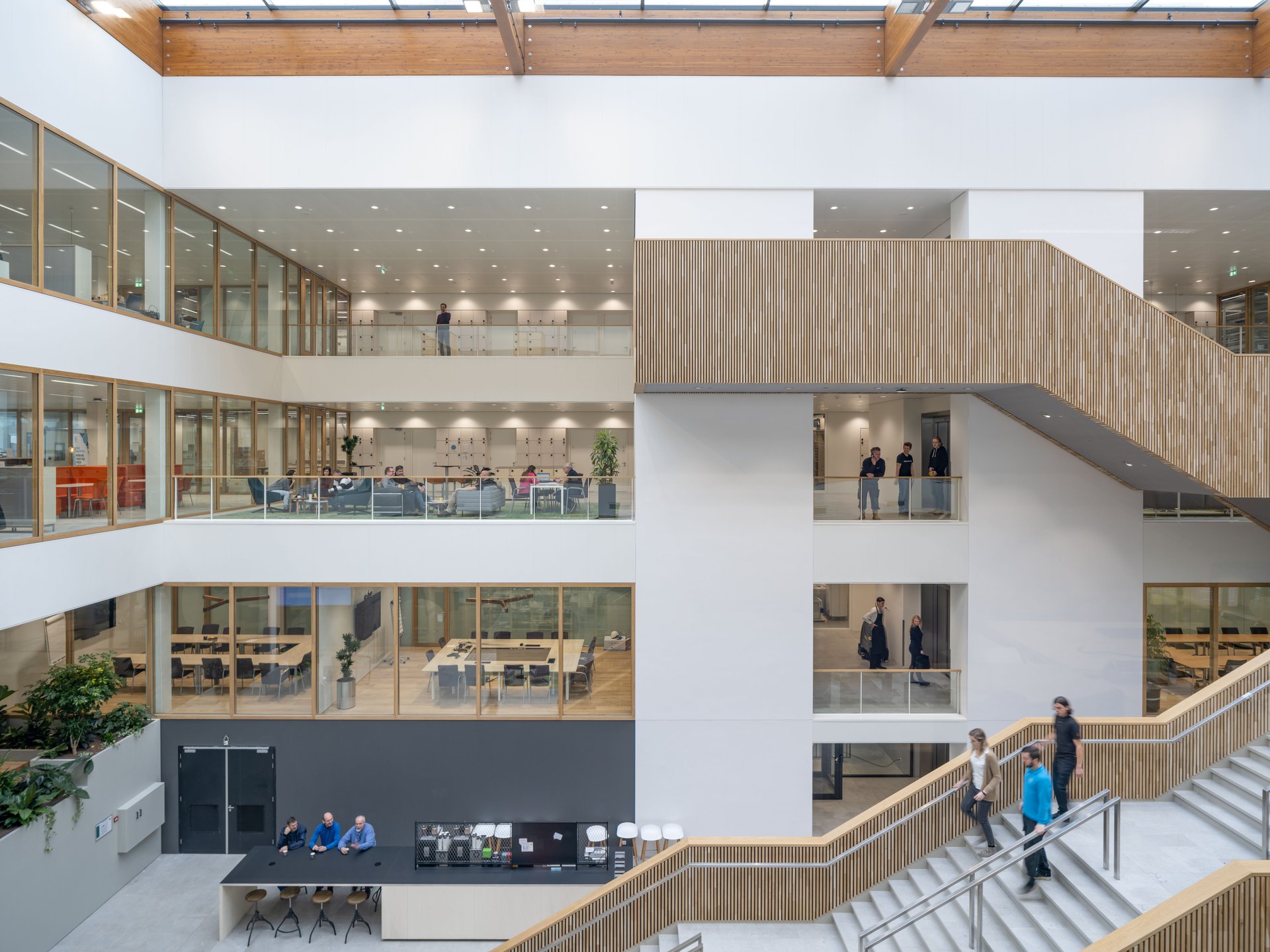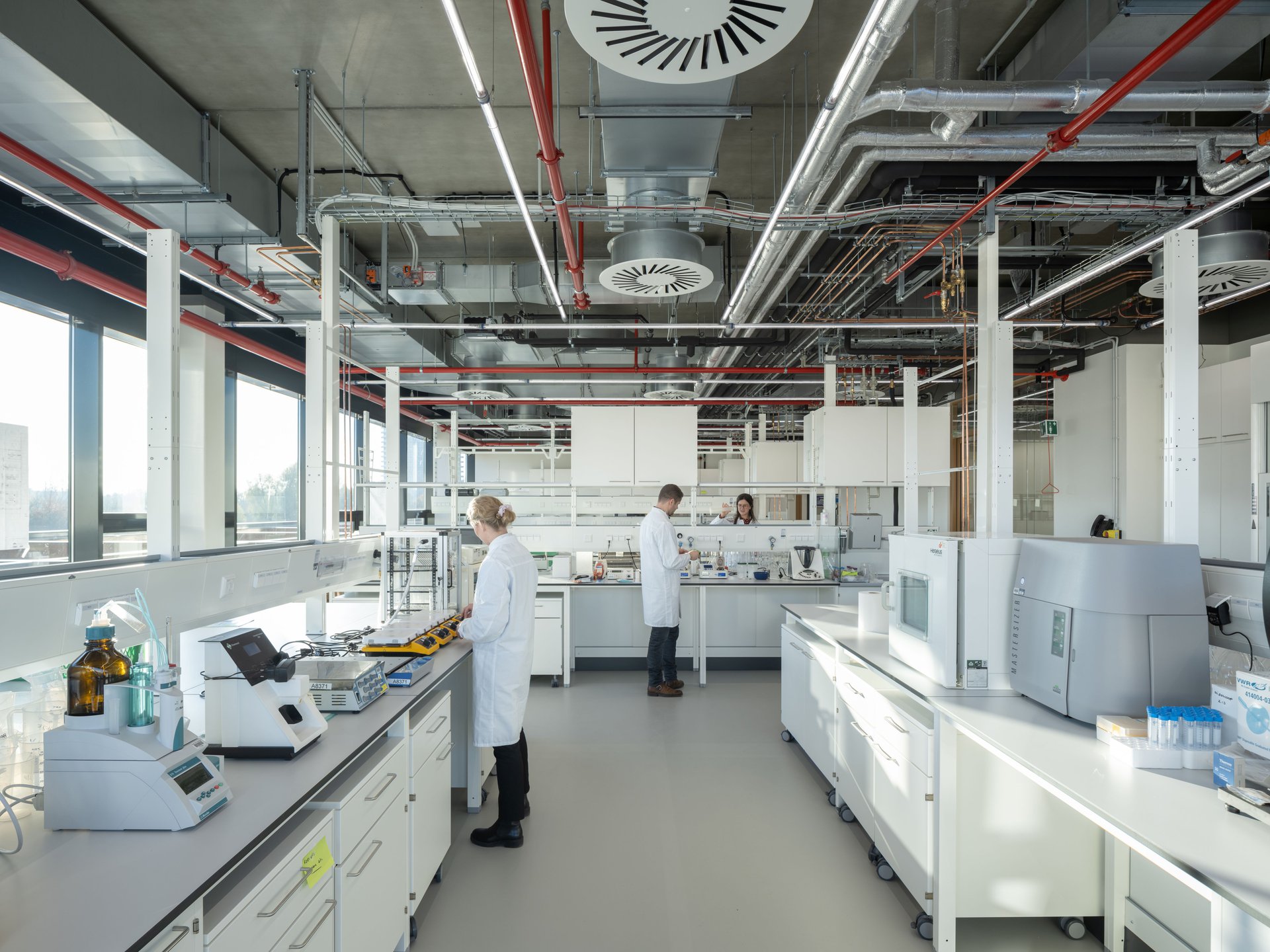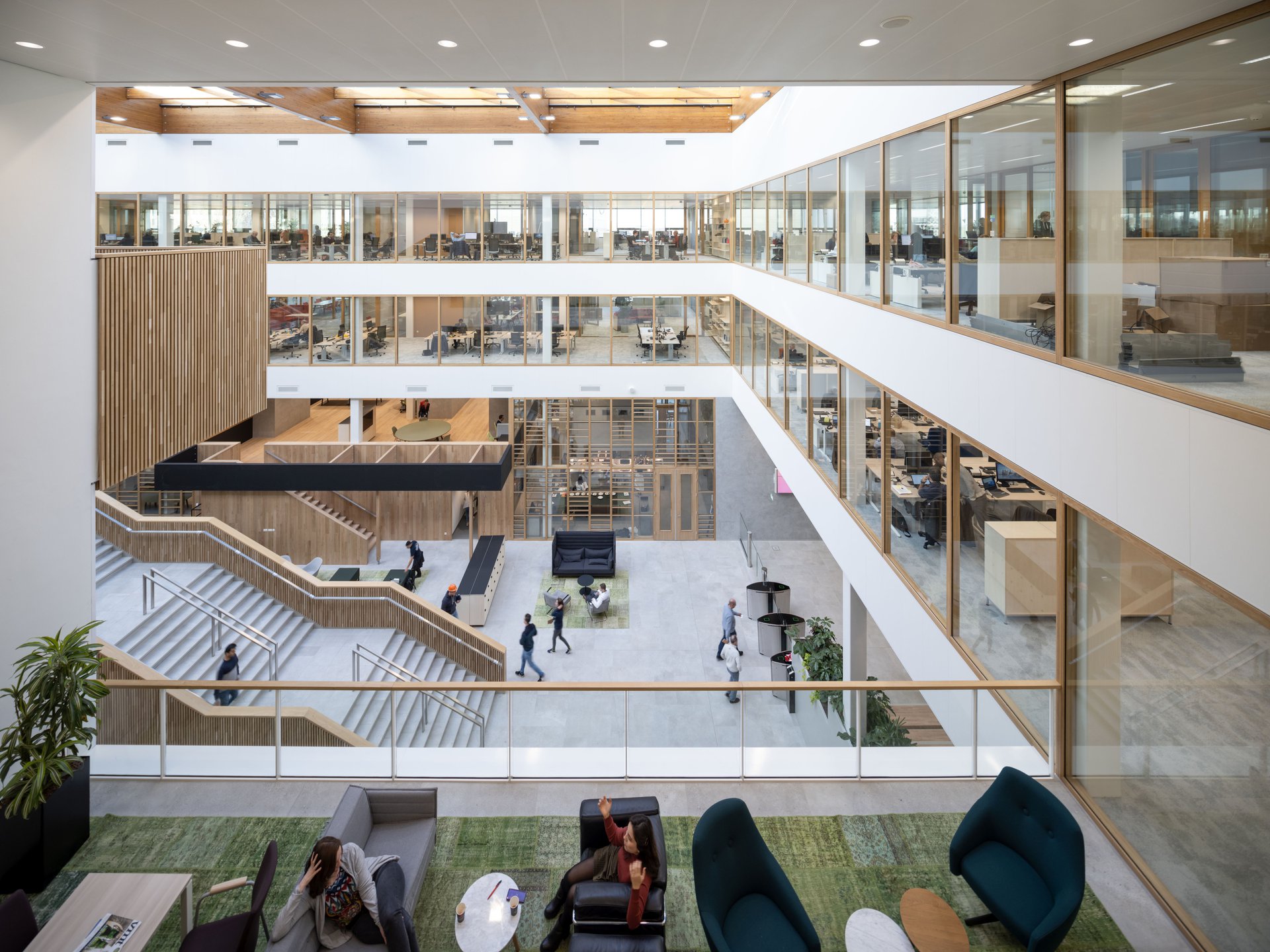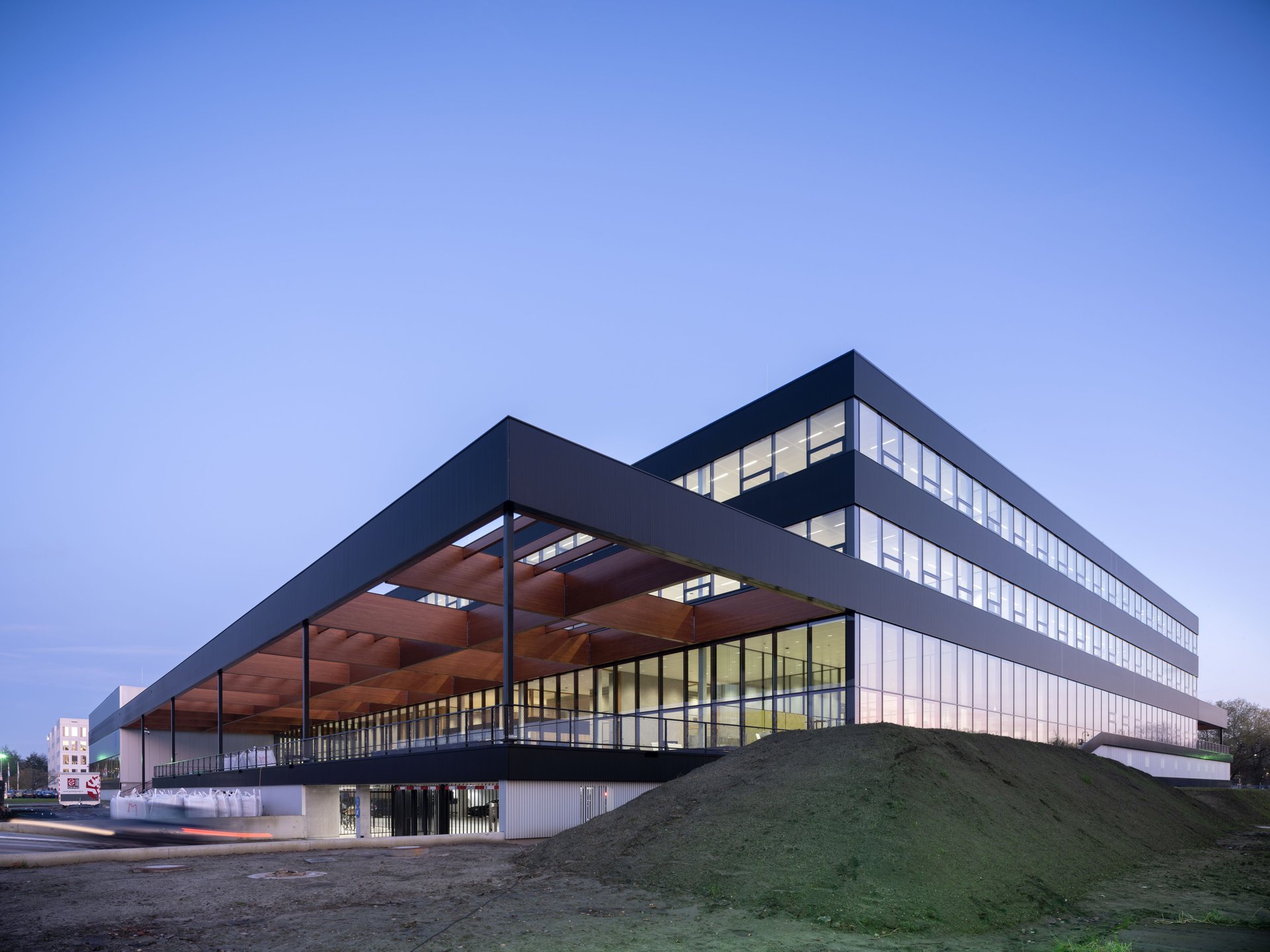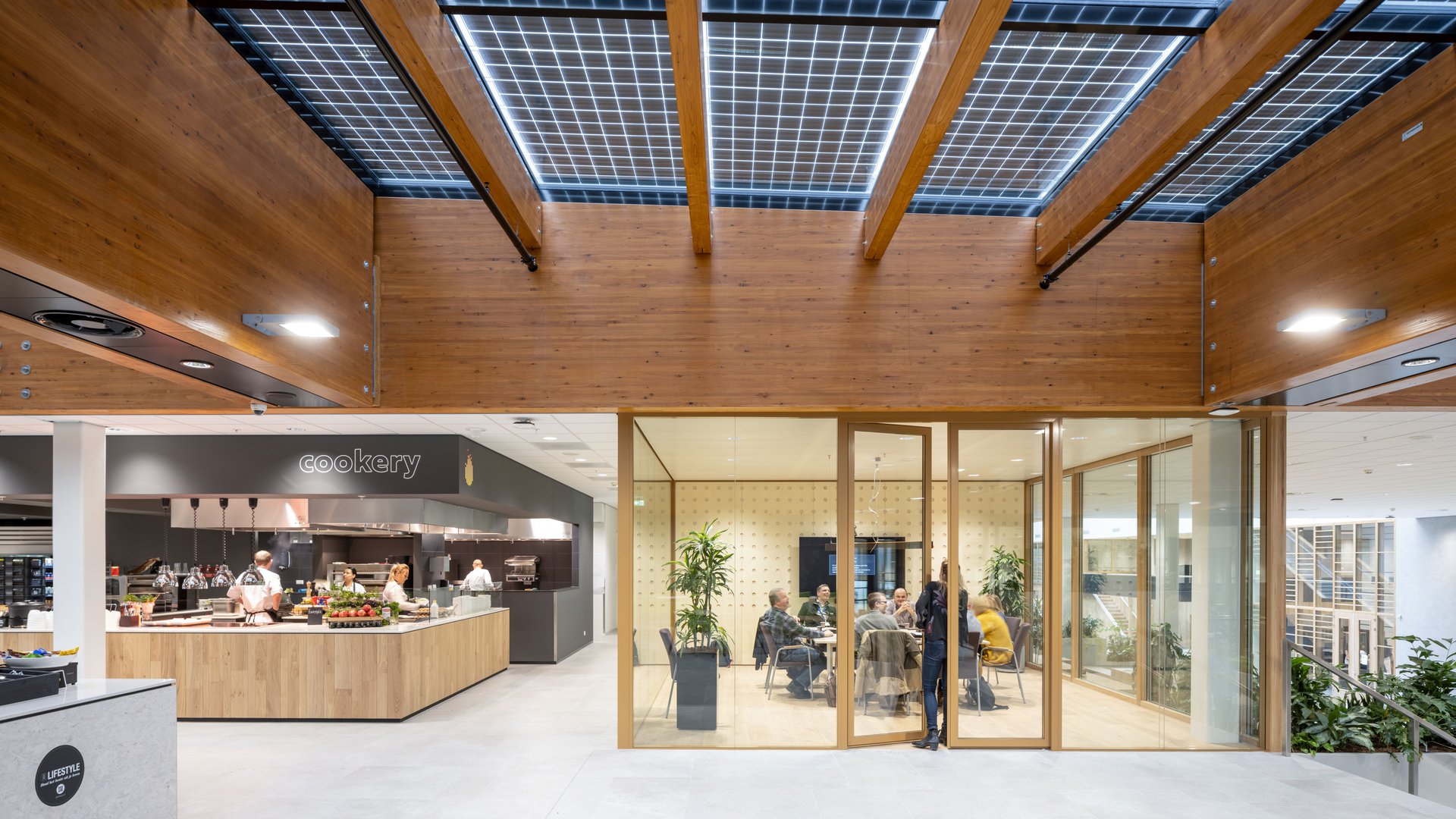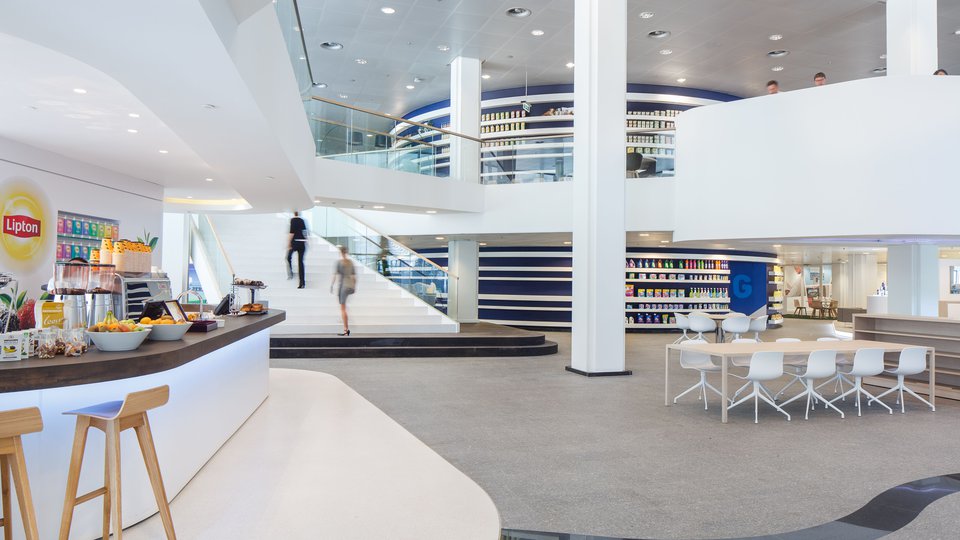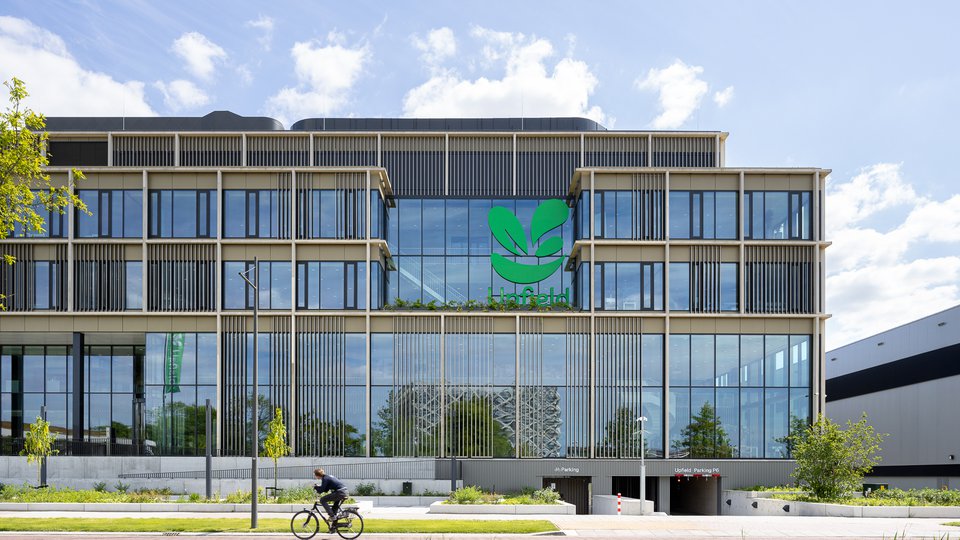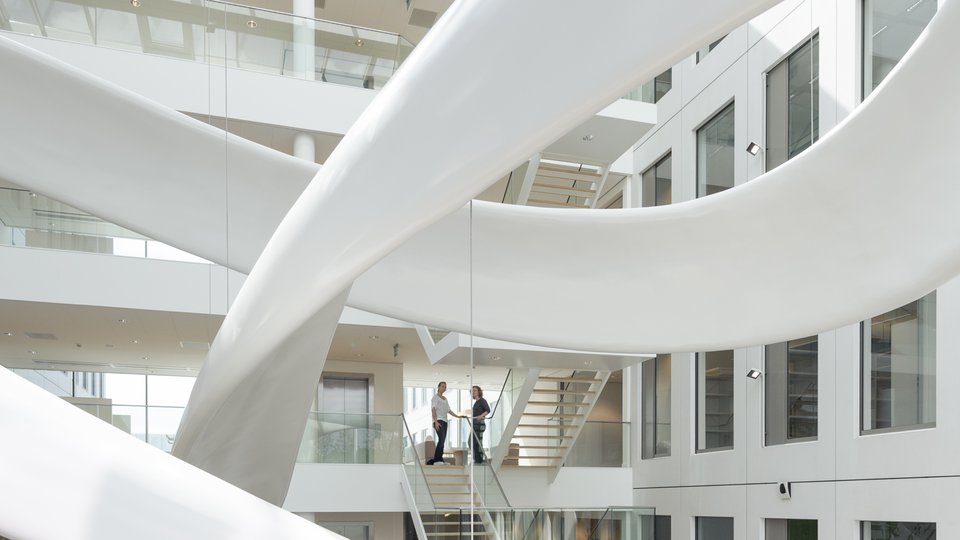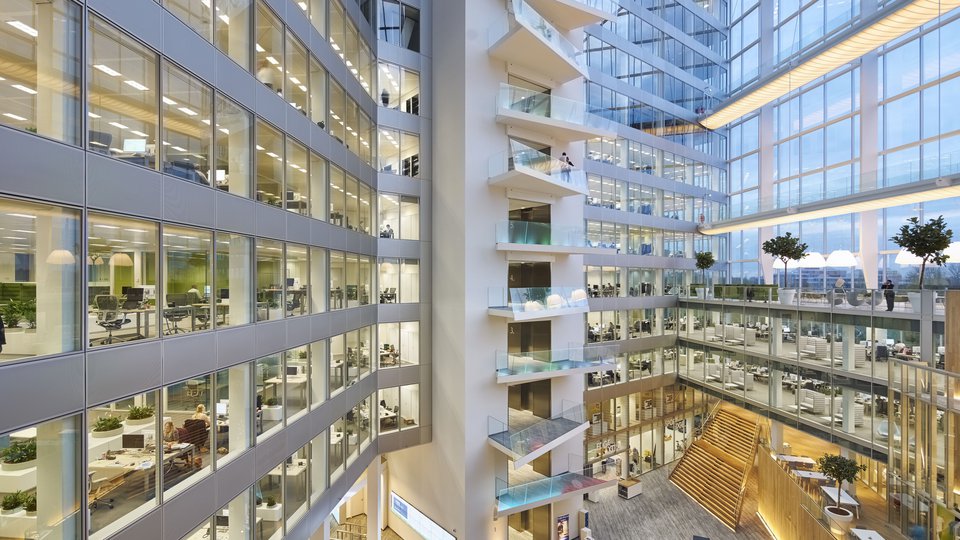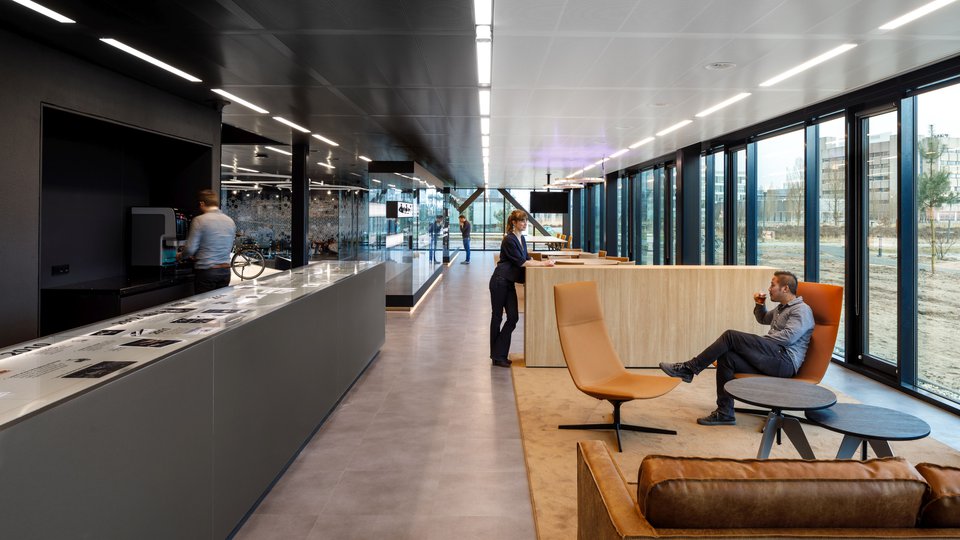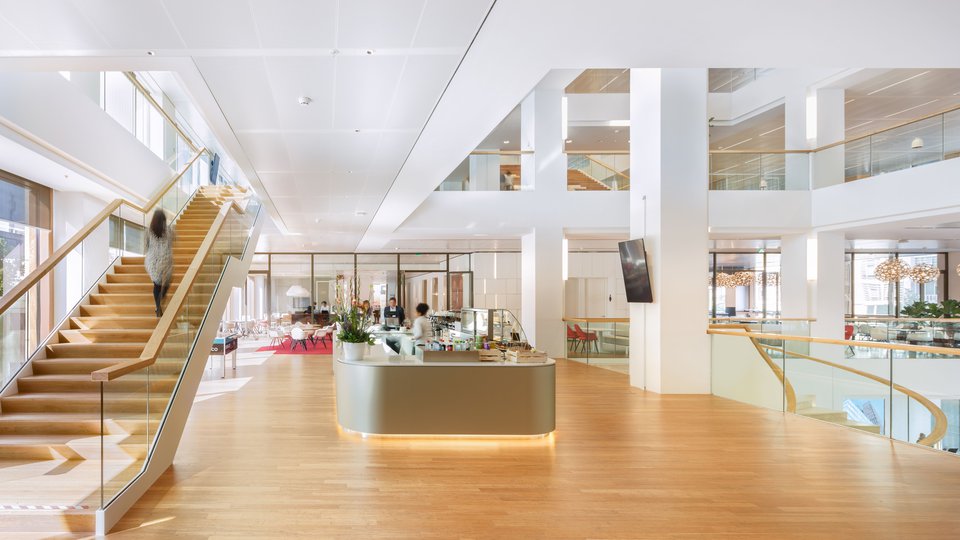| Client | Unilever |
| Location | Wageningen |
| Square | 16.000 |
| Timeline | July 2017 - December 2019 |
| Sustainability | BREEAM Outstanding |
| 2019 | Global BREEAM Design Award |
| 2019 | Global 'Your BREEAM' Award |
| Building Architect | Paul de Ruiter |
| Interior Architecture | Fokkema & Partners |
| Landscape Architecture | Atelier Loos van Vliet |
| Construction and Development | Dura Vermeer Bouw Hengelo |
| Installations Technology | DWA |
| Construction Consultant | Lucassen Bouwcontructies |
| Installations | Hollander Techniek |
| Building Physics and Fire Safety | DGMR |
| Experience Consultant | Sandenberg Concept Creation |
| Laboratories Consultant | Dr. Heinekamp |
| Pilot Plant Consultant | D&S Process Solutions |
| Project Management | Arcadis |
| BREEAM Consultant | DWA & MAT25 |
| Photography | Ossip van Duivenbode |
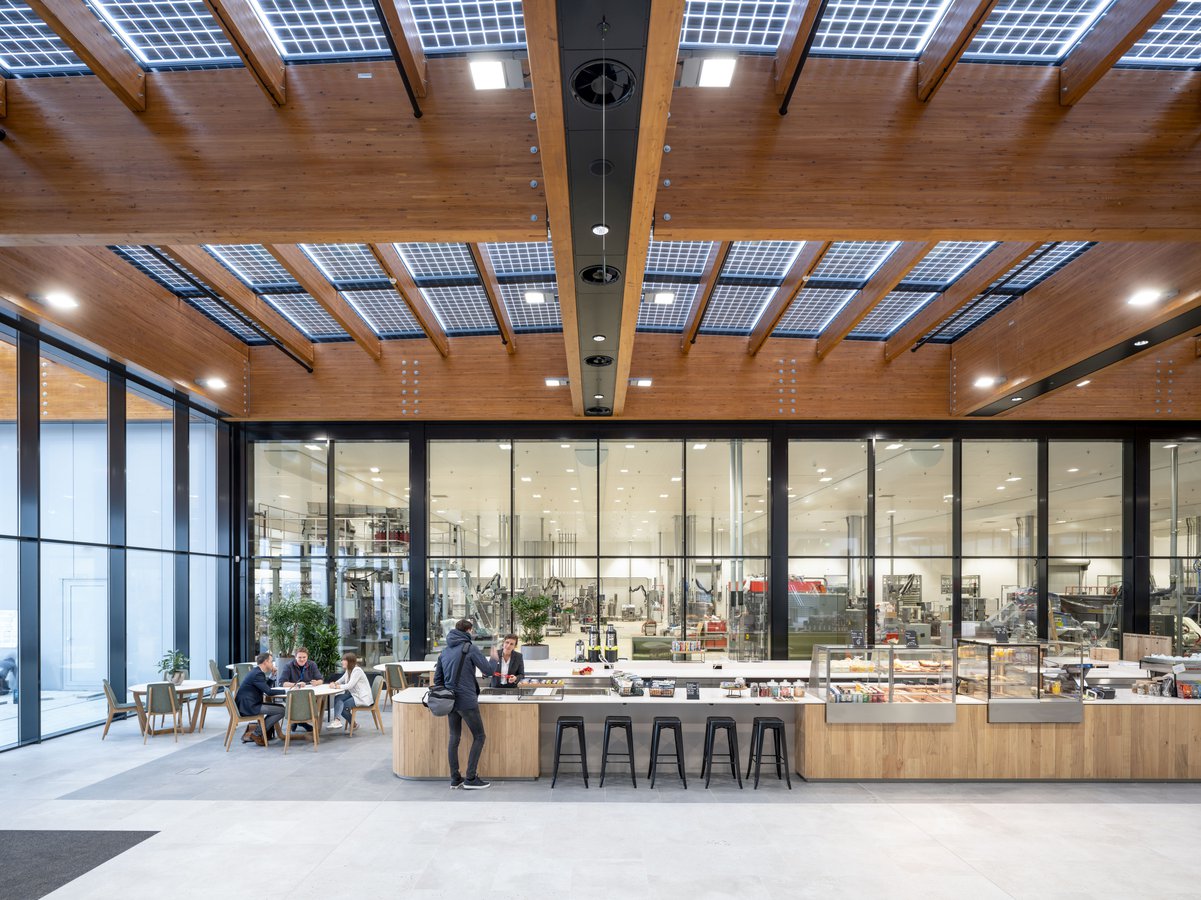
The innovation centre is an important new hub for knowledge sharing between Unilever and other parties on campus, such as researchers and students at Wageningen University & Research. The city of Wageningen is one of the global centres of knowledge for the (agri)food industry and the life sciences. Cross-fertilisation between parties is set to be stimulated by the fact that a major part of the new facility is open to the general public.
Layout designed to support health and well-being
Visitors to most commercial buildings are forced to negotiate some form of security barrier the minute they step through the door. Unilever envisaged the complete opposite from the traditional entrance: a building that would be “open by default”. Here, you step into a vast, light-filled, six-metre-high lobby that is not only liberating in its openness but also makes evident the facility’s dedication to food. Thus, the traditional reception made way for a spacious food bar, where visitors, students, foodies, etc. can enjoy a nice cup of tea or a nutritious spot of lunch while following the activity in the pilot plant, the facility’s mini-factory.
Opposite the food bar is a large demonstration kitchen, where culinary sessions and tastings are hosted every day. The facility’s open-plan design extends to this kitchen, allowing these sessions and tastings to take place in full view of the visiting public. A bit further down is an open auditorium, which functions as a town hall for food innovators to share their knowledge through lectures and symposiums.
The auditorium connects the ground floor with the publicly accessible Food Market, meeting rooms and first floor restaurant. Adjacent to the Food Market is a concession zone, where Unilever’s partners can set up shop and become an active part of the Foods ecosystem. The Foods Experience Kitchens are also located on the ground floor. These four “innovation kitchens” and the large demonstration kitchen together form the creative showcase for Unilever's chefs, who will use the kitchens every day not only as test kitchens, but also for culinary sessions with external parties, cookery classes and special receptions.
We realised a fully circular interior, rethinking the way we relocate, complementary to the sustainable technologies to realise a net-zero building.
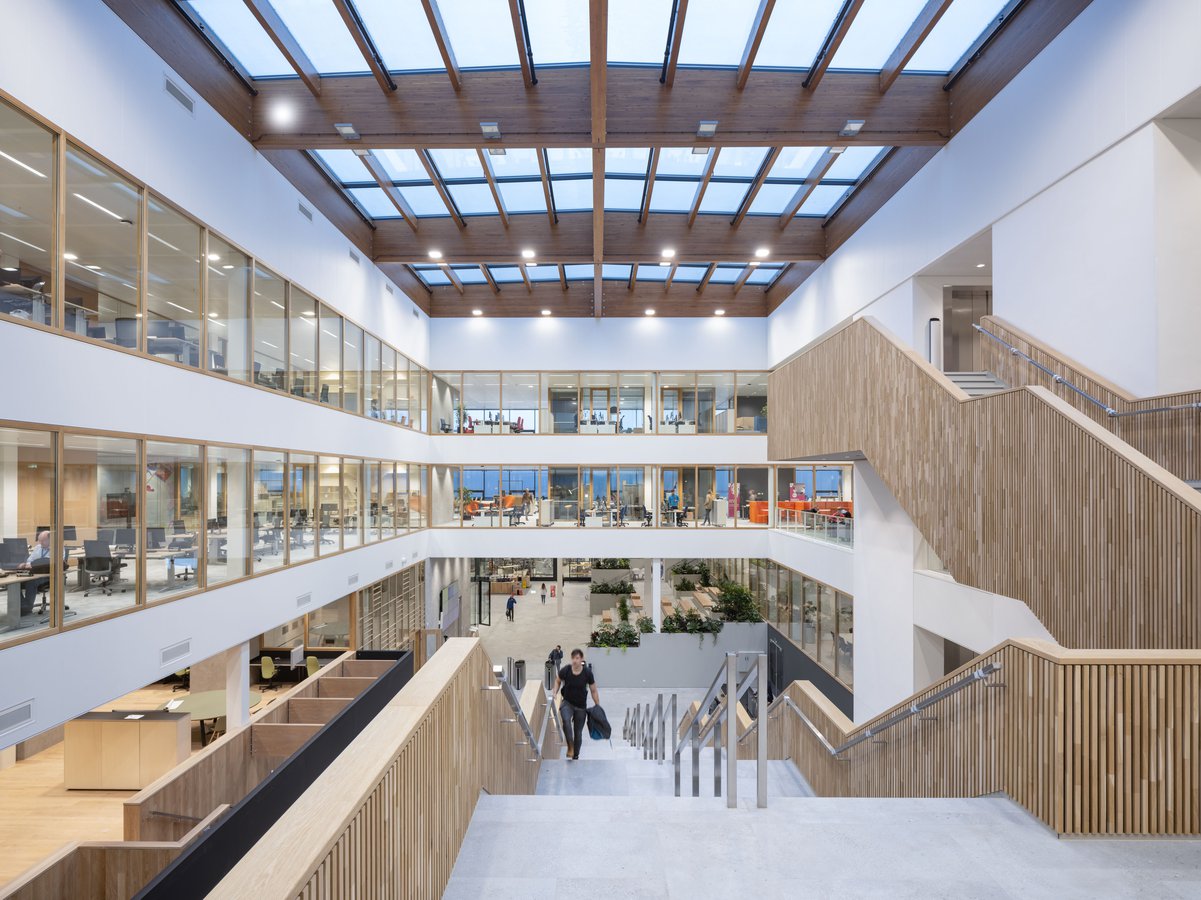
A light-filled atrium with a skylight and a wide wooden staircase links the ground floor with Unilever's offices and laboratories. An underground car park immediately beneath the building and covering an area the size of its footprint provides staff parking for both Unilever and Wageningen University employees. Meanwhile, the gardens on the terraces extend the centre’s design and sustainability efforts outdoors.
A circular interior
The interior fit-out was completely defined by the circular economy. With closure of three Unilever R&D sites in the Netherlands, Germany and Poland the design team presented itself with the challenge of moving as much furniture, fixtures and fittings as possible from the existing sites to the new centre. This circular economy-based idea -‘rethinking the way we relocate’ -became the starting point for all further decisions regarding material selection and the details of the interior design.
A flexible design concept makes a virtue of the colourful variety of the existing furniture, including original upholstery and old office desks, flaws and all. Any custom furniture is based on a minimum-waste principle, leading to a modular design methodology using standard sheet sizes. The detailing makes the furniture easy to disassemble and reclaim the materials. For new coffee corners the construction of old kitchen cabinets was reused as the base for the new furniture. Over 95% of the interior fit-out of the public areas, kitchens and the offices consists of re-used elements, from the loose furniture to the kitchen units and appliances from former Unilever locations. Finishes are made from reclaimed wooden planks, ocean plastic and PET felt.
Photography by Ossip van Duivenbode.
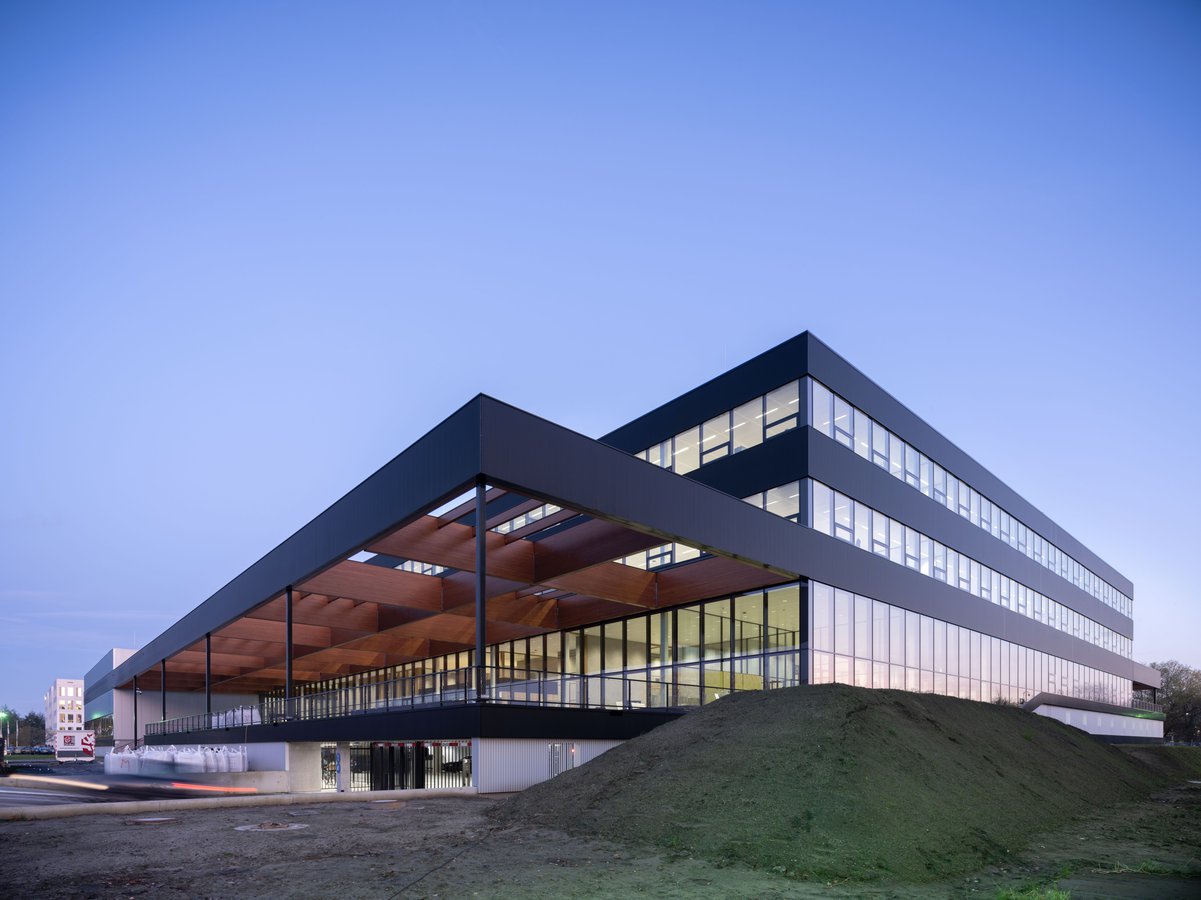
Award winning sustainable architecture
The interior of the global Unilever Foods Innovation Centre was designed with one key mindset: to exchange knowledge and collaborate towards healthy and sustainable foods innovations. The ambitions of Unilever for their innovation powerhouse led to the design of a net-zero energy building with innovative installation concepts and a transparent, contemporary ánd fully circular interior. Close collaboration between design and construction partners with the client led to pushing the boundaries of what an office and laboratory building can be. The building is awarded two global BREEAM awards.
